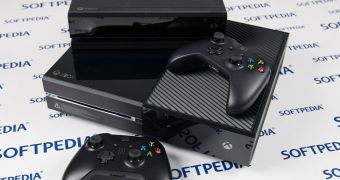Microsoft made big waves last week when it revealed that, on June 9, it's going to debut a new Xbox One bundle for 399 USD/EUR that no longer has a Kinect sensor included.
Afterwards, Microsoft's different executives, like Phil Spencer or Yusuf Mehdi, came forward with statements about the company's belief in the Kinect and how selling the sensor alongside the Xbox One wasn't a mistake when the console was released back in November.
I, however, beg to differ, as the Kinect inclusion was a costly mistake for Microsoft, at least in the way the company implemented it on November 22, when the console was released in 13 countries worldwide.
First, let's take a journey back in time to 2010, when the original Kinect was launched for the Xbox 360. While the device was hyped up to be a new advancement in technology and become one of the fastest-selling pieces of electronics worldwide, it failed to live up to expectations.
It required a lot of space in the room for an accurate detection and the voice commands had a lot of errors, especially if you had an accent and didn't speak in perfect English.
With the new Kinect for the Xbox One, Microsoft promised that everything was improved, from the voice detection to better gesture-based navigation, and much more.
Unfortunately, due to the ongoing controversy surrounding the Xbox One's policies last summer, the sensor's importance didn't exactly shine through. What's more, Microsoft was busy backtracking on its different policies, from the mandatory internet connection, to the used game policy and much more. As such, it didn't have time to show just why the new Kinect 2.0 deserved to be sold alongside the Xbox One.
If you're going to charge 100 USD/EUR more than your direct competitor, especially if you've suffered from a bad perception, then you have to double your efforts and show just why your product deserves the investment.
Microsoft chose to emphasize in the period leading up to launch on the entertainment side of the Xbox One, mentioning just a few scarce words about the Kinect and how it can improve TV viewing. However, entertainment devourers aren't going to invest 499 USD/EUR, hardcore gamers are, loyal fans who enjoyed the Xbox 360 and want to stay in the Microsoft ecosystem.
These consumers, however, knew that the Kinect wasn't that useful on Xbox 360 (due to few must-have games) and didn't want to pay for a package that included a sensor they wouldn't find any use, especially since Microsoft didn't show them how the peripheral can improve the actual gaming experience.
There were a few mentions about voice commands in Dead Rising 3, for example, but it didn't feel like the new Kinect could deliver a better experience than the original one.
Now, without the sensor, the Xbox One stands a fighting chance against the PS4.
However, seeing as how Sony is finally close to addressing the shortages of PS4 units, Microsoft has an uphill battle ahead of it and it's unclear who's going to emerge the victor.

 14 DAY TRIAL //
14 DAY TRIAL //